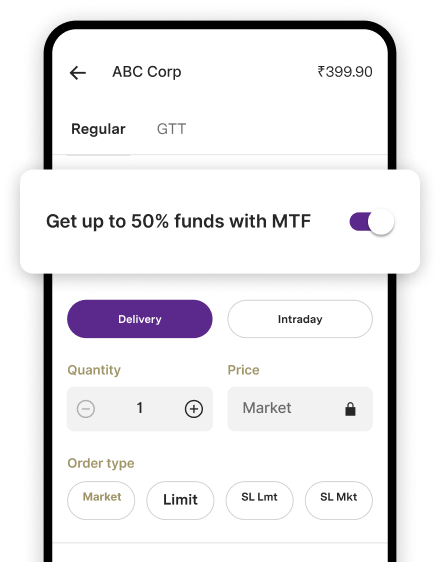IMPS vs. NEFT: Key Differences And Benefits
What Exactly Is NEFT?
Benefits Of NEFT
-
Availability 24 hours a day, 365 days a year.
-
Near-real-time money transfers to the beneficiary account and secure settlement.
-
Pan-India coverage with a broad network of bank branches of various types.
-
A positive confirmation of credit to the recipient account is sent to the remitter through SMS or email.
-
A positive confirmation of credit to the beneficiary account is sent to the remitter through SMS or email.
-
Offers penal interest provision for late payment or return of transactions.
-
The RBI does not collect fees on banks.
-
There are no fees for online NEFT transfers for savings account holders.
-
In addition to cash transfers, the NEFT system can be utilized for a range of operations, such as credit card dues to card issuing banks, EMI payments, inbound foreign exchange remittances, and so on.
How to Transfer Funds Using NEFT
-
Log in to your banking portal if your bank is part of the NEFT transfer network.
-
Make the fund's receiver a beneficiary.
-
In the New Payee area, provide their individual information (name, account type, account number, IFSC code).
-
Select NEFT as your desired mode of transmission.
-
Fill out the transfer details (including the transfer amount) and submit it.
-
The transfer is now completed.
What Is IMPS?
The Benefits Of IMPS
-
Aadhaar number, cell phone number, and MMID can be used to transfer funds.
-
IMPS sends you Credit and Debit Confirmation through SMS right away.
-
By using IMPS, the funds will be credited to the beneficiary's account in a matter of seconds.
-
IMPS is reliable, safe, and cost-effective.
-
The IMPS fund transfer has no minimum amount limit for fund transactions.
-
IMPS is available twenty-four hours a day, seven days a week, including holidays.
-
The customer can make both intrabank and interbank payments.
-
IMPS can be accessed by mobile phones, online banking, and ATMs.
-
Knowing the beneficiary's account number and IFSC while using IMPS is unnecessary.
How To Use IMPS To Transfer Money
-
Sign up for your preferred mobile banking service.
-
Create an MPIN and a Mobile Money Identifier (MMID).
-
Ascertain that the beneficiary client has the MMID as well.
-
Log in to your net banking account and choose IMPS as your desired way of transmission.
-
Fill out the form and submit the transfer.
-
Once the transfer has been sent, you will receive a confirmation text message.
Some Of The Major Banks That Provide NEFT And IMPS Services
-
Bank of Baroda
-
Central Bank of India
-
Axis Bank
-
ICICI Bank
-
IndusInd Bank
-
Kotak Mahindra Bank
Key Differences Between NEFT and IMPS
-
NEFT falls into electronic banking, but IMPS is listed under mobile banking.
-
The NPCI primarily regulates IMPS, whereas the RBI mostly regulates NEFT.
-
While IMPS is swift and instant, NEFT takes a little longer because it depends on bank business hours.
-
IMPS is a direct transfer and a one-on-one settlement technique, whereas NEFT runs through clearance centres and delivers money to the beneficiary's account in batches.
-
You can make an IMPS transfer by logging into your online banking, mobile banking, UPI, or ATM. NEFT, on the contrary, is only available through internet banking if it is enabled.
-
You can perform cell phone-based/P2P (peer-to-peer) payments using MMID for IMPS but not for NEFT. You need to input all the bank details, such as the recipient's name, account number, bank's name, cell phone number, and IFSC code for NEFT. In IMPS, this is only required for P2A (phone-to-account) transactions. As a result, IMPS offers both possibilities, whereas NEFT does not.
-
IMPS payments are generally made online, although NEFT payments can be performed in person at a bank branch.
-
IMPS is more adaptable and less expensive than NEFT.
-
The transaction fees for NEFT and IMPS are also different. NEFT and IMPS fees are set at the discretion of the bank. NEFT fees start at ₹1 for each transaction and can reach ₹ 25 per transaction. IMPS charges typically start at ₹ 5 per transaction and can reach ₹15 per transaction. However, the RBI has eliminated the service costs that were previously applied to online NEFT transactions initiated over the internet or mobile banking.
-
There is no maximum or minimum limit for NEFT transactions, although the ceiling limit for money remittances and transfers to Nepal is INR 50,000 per transfer. In the instance of IMPS, there isn't a minimum limit, but the maximum transaction per transfer is limited to INR 200,000.
Conclusion
Never miss a trading opportunity with Margin Trading Facility
Enjoy 2X leverage on over 900+ stocks

